This article was co-authored by Kevin Stone, MD. Dr. Kevin Stone is an orthopaedic surgeon and the founder of The Stone Clinic, a leading orthopaedic surgery, sports medicine, and rehabilitation clinic in the San Francisco Bay Area. With over 30 years of experience, Dr. Stone specializes in knee, shoulder, and ankle repair, using biologic reconstruction and joint replacement. He holds a BS in Biology from Harvard University and a Doctor of Medicine (MD) from the University of North Carolina at Chapel Hill. Dr. Stone completed his residency in Internal Medicine and Orthopaedic Surgery at Harvard University and in General Surgery at Stanford University. He then completed a fellowship in Orthopaedic Research and Surgery at the Hospital for Special Surgery and Tahoe Orthopaedics. He lectures around the world as an expert in cartilage and meniscal growth, replacement, and repair and holds over 40 U.S. patents on novel inventions to improve healthcare. Dr. Stone is a physician for Smuin Ballet and has served as a physician for the U.S. Ski Team, the U.S. Pro Ski Tour, the United States Olympic Training Center, and World Pro Ski Tour.
This article has been viewed 7,493 times.
Ouch! Shoulder pain is no fun at all. If you have subacromial bursitis, or shoulder pain and inflammation, chances are you can treat it and get rid of the pain.
Steps
Background
-
1A bursa is a fluid-filled sac that lubricates joints. They’re located in places around your body that experience a higher level of wear and friction, such as your elbows, hips, and knees. The bursa sacs in your shoulders help ease the rubbing between the bone, muscle, and tendon tissue.
-
2Subacromial bursitis is inflammation of your shoulder bursa. Subacromial is the medical term for the space in your shoulder where your ligaments connect to your muscles. In that space, the subacromial bursa helps to lubricate the region and reduce friction between the muscles, joints, and ligaments. But if the bursa becomes inflamed, it can lead to a painful condition known as subacromial bursitis.
Causes
-
1The most common causes are repetitive motions and stress on the joint. Repetitive motions such as throwing a baseball or lifting boxes over your head over and over and put a lot of stress on your shoulder joint, which can lead to bursitis. Additionally, putting pressure on the joint by laying in a position that stresses your shoulder joint can also cause bursitis.[1]
-
2Bursitis can also be caused by an infection. This type of subacromial bursitis is more serious. Bacteria can infect the bursa in your shoulder, leading to painful inflammation and swelling. If the infection spreads, it could cause more serious medical issues.[2]
-
3
-
4Gout, diabetes, and uremia can make bursitis more likely. Some preexisting medical conditions can cause your shoulder bursa to swell, which can lead to bursitis, or make it easier to develop. While it’s less common, other underlying medical conditions can contribute to bursitis.[5]
Symptoms
-
1Your shoulder can feel achy and hurt when you move it. It’s common for folks with bursitis to feel like their shoulder is stiff and painful whenever they move their arm. It may also hurt whenever you press or lean on your shoulder.[6]
-
2You may have swelling around your shoulder. Swelling around your shoulder is pretty common, and sometimes you may not have any pain at all. The skin around your shoulder may not be red, but the swelling just won’t subside.[7]
-
3Warmth around the inflamed bursa could be a sign of infection. If your bursitis is caused by an infection, you may have some redness and warmth along with pain and stiffness. The warmth is a sign that your body is actively fighting the infection.[8]
-
4An infected bursa may make you feel sick, feverish, and tired. If the infection is getting worse or spreading to other areas of your body, it can make you feel like you’re ill. You could have chills and body aches in other places besides your shoulder. You may also have a fever and feel tired and groggy.[9]
Diagnosis
-
1Get a physical exam to diagnose bursitis. Oftentimes, your doctor will be able to look at your medical history and ask questions about your daily activities. They’ll then be able to physically examine your shoulder and check for signs of bursitis. This is usually enough to determine whether or not you’re suffering from bursitis.[10]
-
2Your doctor may order X-rays to rule out other causes. If they can’t quite fully confirm a bursitis diagnosis, your doctor may want to make sure there isn’t another cause for your symptoms. An X-ray can’t determine whether you’ve got bursitis, but it can rule out other potential causes and help your doctor make a diagnosis.[11]
-
3Lab tests of the fluid around the inflamed bursa can pinpoint the cause. Although it’s more rare, your doctor may extract some of the fluid in the swelling around your shoulder. Lab tests can help determine if there’s an infection and what type. It can also help rule out other potential causes for your symptoms.[12]
Treatment
-
1Stop doing the activity that caused the swelling to treat chronic bursitis. Chronic bursitis refers to persistent bursitis that keeps coming back. The main treatment for it is to reduce or stop any activities that seem to make it worse.[13]
- For instance, if there’s a specific activity that causes your bursitis to flare up, such as throwing a football or doing overhead shoulder presses, you may need to stop or reduce these activities to prevent future occurrences.
-
2Wear a splint to help immobilize your shoulder. A shoulder splint can help keep your shoulder from moving around and aggravating your bursitis. You may need to wear a splint to prevent further injury and to help the healing process.[14]
-
3Take oral NSAIDs to treat pain and inflammation. Non-steroidal anti-inflammatory drugs (NSAIDs) such as aspirin, ibuprofen, and naproxen help reduce the inflammation and swelling around your shoulder. If you can get your swelling to go down, it can put less pressure on the joint, which can reduce your pain.[15]
- Your doctor may recommend an over-the-counter NSAID or they may prescribe you a stronger one depending on the severity of your bursitis.
-
4Do physical therapy to help prevent bursitis from recurring. Your doctor may refer you to a physical therapist or recommend specific exercises you can do to strengthen the muscles around your shoulder joint. If the muscles are stronger and better able to support the joint, it can reduce your pain and potentially prevent future occurrences of bursitis.[16]
-
5Take antibiotics to treat bursitis caused by an infection. If your doctor determines that your bursitis is caused by an infection, they’ll want to knock out the infection ASAP. Antibiotics will help your body fight the infection. Once it’s gone, there won’t be as much swelling and inflammation around your shoulder, and your bursitis can clear up.[17]
-
6Get cortisone injections to relieve severe pain and inflammation. If your bursitis won’t improve after trying other treatment options, your doctor may resort to steroid injections. Cortisone is a steroid that your doctor can inject directly into your shoulder joint and help reduce the swelling, pain, and inflammation.[18]
-
7Get surgery in rare but sometimes necessary cases. If all else fails, your doctor can surgically drain the swollen bursa. In extreme cases, they may surgically remove the bursa altogether.[19]
Expert Q&A
-
QuestionWhat would be some of the most common treatments for bursitis?
 Kevin Stone, MDDr. Kevin Stone is an orthopaedic surgeon and the founder of The Stone Clinic, a leading orthopaedic surgery, sports medicine, and rehabilitation clinic in the San Francisco Bay Area. With over 30 years of experience, Dr. Stone specializes in knee, shoulder, and ankle repair, using biologic reconstruction and joint replacement. He holds a BS in Biology from Harvard University and a Doctor of Medicine (MD) from the University of North Carolina at Chapel Hill. Dr. Stone completed his residency in Internal Medicine and Orthopaedic Surgery at Harvard University and in General Surgery at Stanford University. He then completed a fellowship in Orthopaedic Research and Surgery at the Hospital for Special Surgery and Tahoe Orthopaedics. He lectures around the world as an expert in cartilage and meniscal growth, replacement, and repair and holds over 40 U.S. patents on novel inventions to improve healthcare. Dr. Stone is a physician for Smuin Ballet and has served as a physician for the U.S. Ski Team, the U.S. Pro Ski Tour, the United States Olympic Training Center, and World Pro Ski Tour.
Kevin Stone, MDDr. Kevin Stone is an orthopaedic surgeon and the founder of The Stone Clinic, a leading orthopaedic surgery, sports medicine, and rehabilitation clinic in the San Francisco Bay Area. With over 30 years of experience, Dr. Stone specializes in knee, shoulder, and ankle repair, using biologic reconstruction and joint replacement. He holds a BS in Biology from Harvard University and a Doctor of Medicine (MD) from the University of North Carolina at Chapel Hill. Dr. Stone completed his residency in Internal Medicine and Orthopaedic Surgery at Harvard University and in General Surgery at Stanford University. He then completed a fellowship in Orthopaedic Research and Surgery at the Hospital for Special Surgery and Tahoe Orthopaedics. He lectures around the world as an expert in cartilage and meniscal growth, replacement, and repair and holds over 40 U.S. patents on novel inventions to improve healthcare. Dr. Stone is a physician for Smuin Ballet and has served as a physician for the U.S. Ski Team, the U.S. Pro Ski Tour, the United States Olympic Training Center, and World Pro Ski Tour.
Board Certified Orthopaedic Surgeon Take over-the-counter anti-inflammatory medications, such as ibuprofen or injections of either cortisone or injections of anabolic factors that are potent anti-inflammatories, such as PRP and amniotic fluid to relieve pain and reduce inflammation of bursitis.
Take over-the-counter anti-inflammatory medications, such as ibuprofen or injections of either cortisone or injections of anabolic factors that are potent anti-inflammatories, such as PRP and amniotic fluid to relieve pain and reduce inflammation of bursitis.
Warnings
- Don’t take any prescription medication unless it’s provided by your doctor.⧼thumbs_response⧽
References
- ↑ https://www.mayoclinic.org/diseases-conditions/bursitis/symptoms-causes/syc-20353242
- ↑ https://www.hopkinsmedicine.org/health/conditions-and-diseases/shoulder-bursitis
- ↑ https://www.ncbi.nlm.nih.gov/books/NBK541096/
- ↑ https://www.mayoclinic.org/diseases-conditions/bursitis/symptoms-causes/syc-20353242
- ↑ https://www.hopkinsmedicine.org/health/conditions-and-diseases/shoulder-bursitis
- ↑ https://www.mayoclinic.org/diseases-conditions/bursitis/symptoms-causes/syc-20353242
- ↑ https://www.hopkinsmedicine.org/health/conditions-and-diseases/shoulder-bursitis
- ↑ https://www.hopkinsmedicine.org/health/conditions-and-diseases/shoulder-bursitis
- ↑ https://www.hopkinsmedicine.org/health/conditions-and-diseases/shoulder-bursitis
- ↑ https://www.mayoclinic.org/diseases-conditions/bursitis/diagnosis-treatment/drc-20353247
- ↑ https://www.ncbi.nlm.nih.gov/books/NBK541096/
- ↑ https://www.mayoclinic.org/diseases-conditions/bursitis/diagnosis-treatment/drc-20353247
- ↑ https://www.cedars-sinai.edu/Patients/Health-Conditions/Bursitis-of-the-Shoulder.aspx
- ↑ https://www.hopkinsmedicine.org/health/conditions-and-diseases/shoulder-bursitis
- ↑ https://www.ncbi.nlm.nih.gov/books/NBK541096/
- ↑ https://www.mayoclinic.org/diseases-conditions/bursitis/diagnosis-treatment/drc-20353247
- ↑ https://www.mayoclinic.org/diseases-conditions/bursitis/diagnosis-treatment/drc-20353247
- ↑ https://www.hopkinsmedicine.org/health/conditions-and-diseases/shoulder-bursitis
- ↑ https://www.cedars-sinai.edu/Patients/Health-Conditions/Bursitis-of-the-Shoulder.aspx
- ↑ https://www.ncbi.nlm.nih.gov/books/NBK541096/
- ↑ https://www.cedars-sinai.edu/Patients/Health-Conditions/Bursitis-of-the-Shoulder.aspx

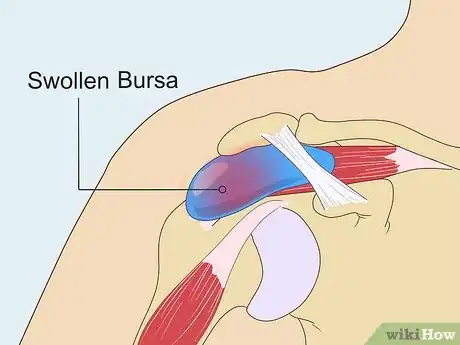
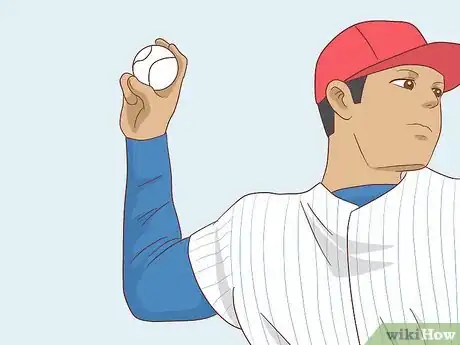
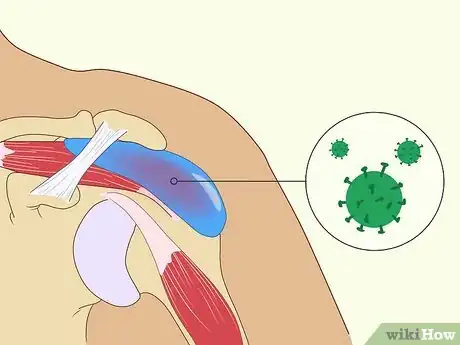
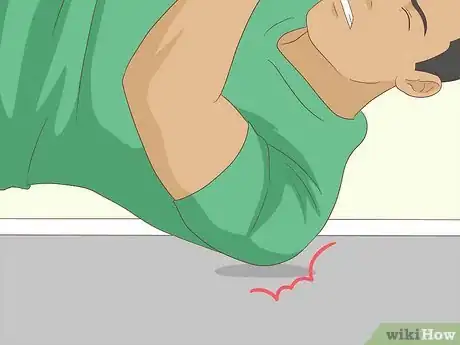
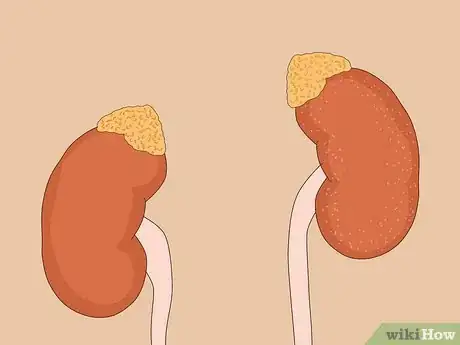

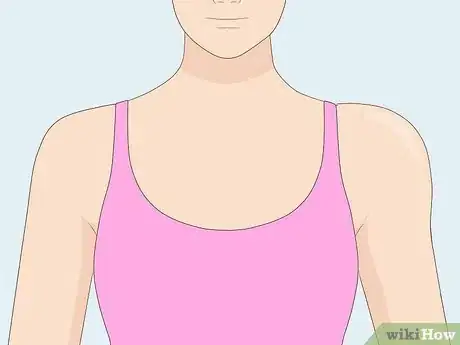
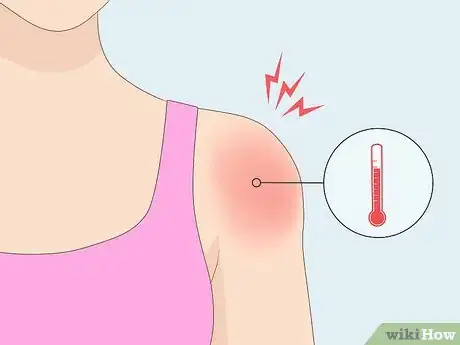
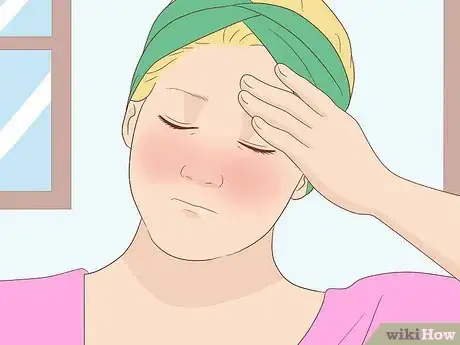
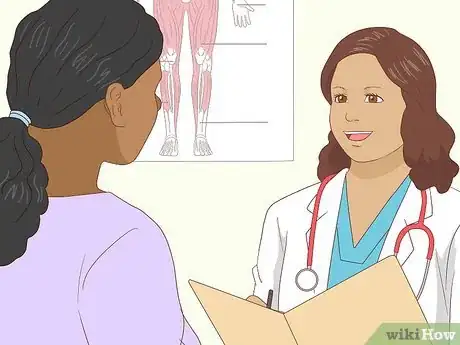

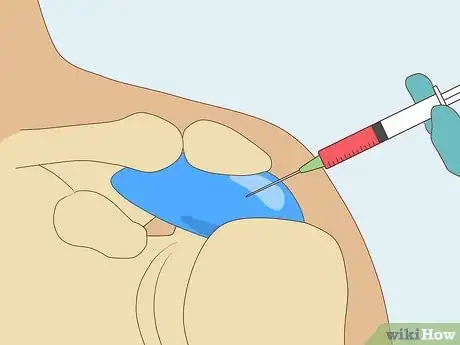
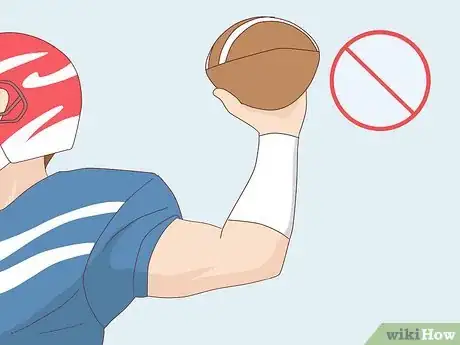
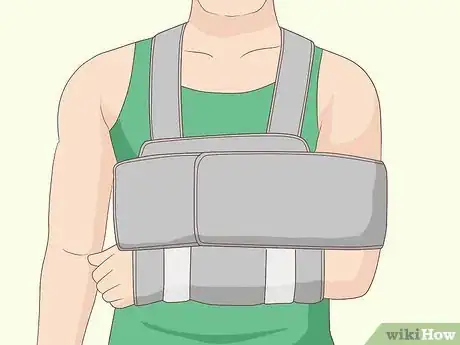
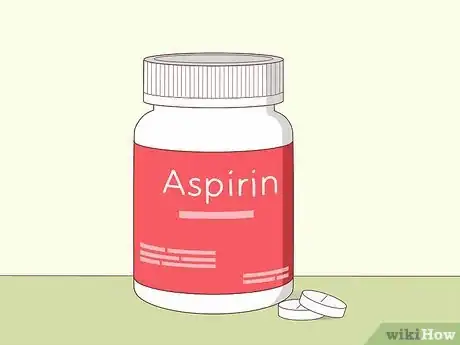
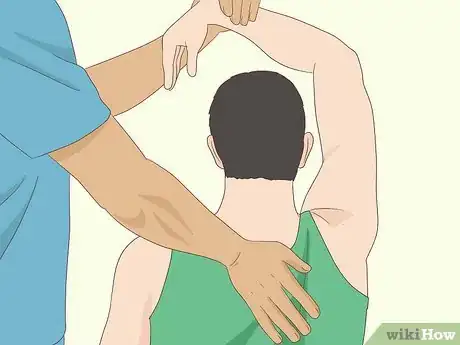

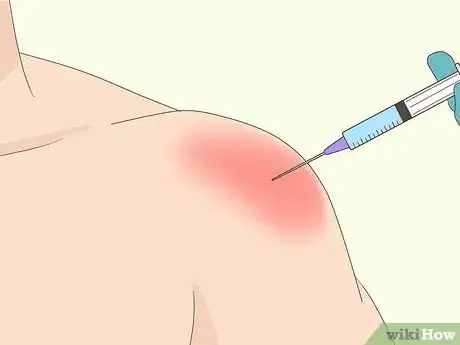
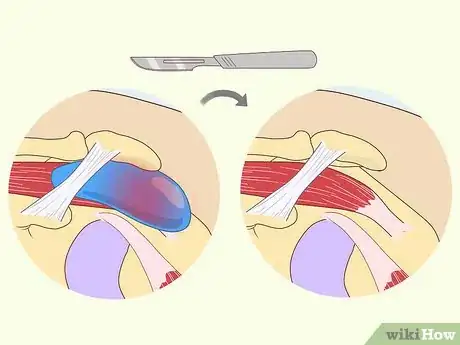



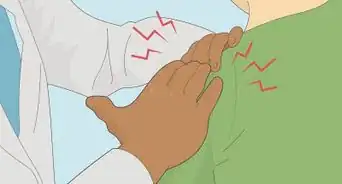
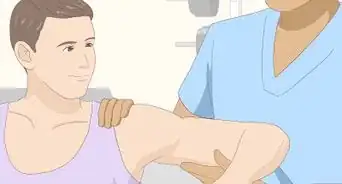
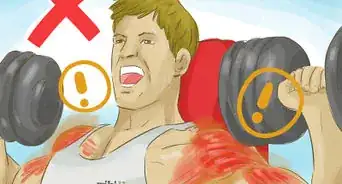
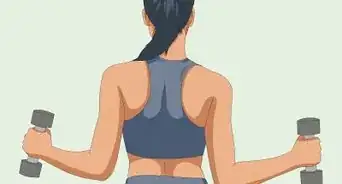
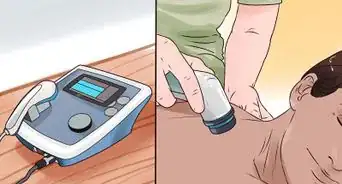
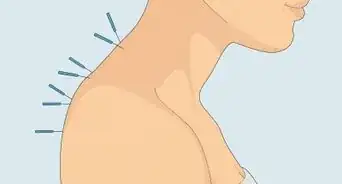
-Step-3-Version-3.webp)
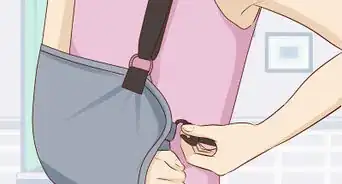

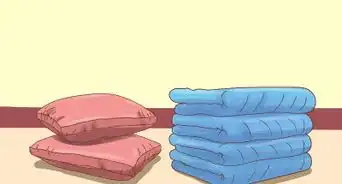
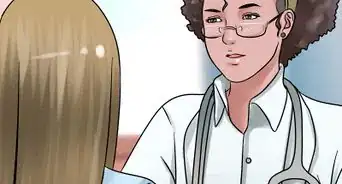








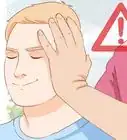
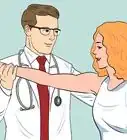
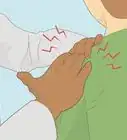
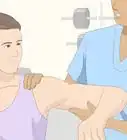



































Medical Disclaimer
The content of this article is not intended to be a substitute for professional medical advice, examination, diagnosis, or treatment. You should always contact your doctor or other qualified healthcare professional before starting, changing, or stopping any kind of health treatment.
Read More...